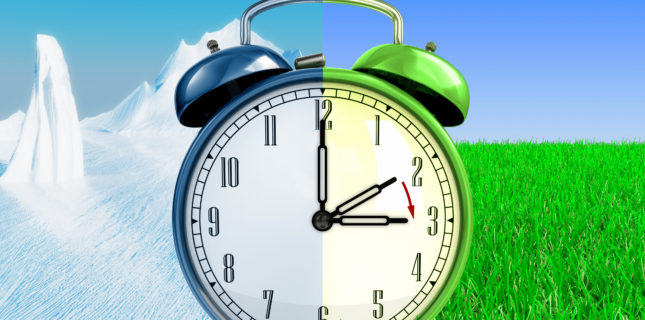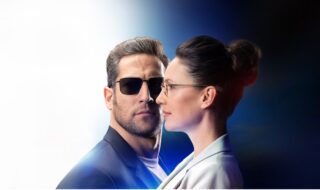
Spring Forward
Daylight Saving Time begins at 2 a.m. on Sunday. That means more daylight hours and more time for outdoor activities. If extra daylight hours aren’t your thing, then blame Benjamin Franklin. He came up with the idea in 1784 as a way to help conserve energy. And, yes, it’s Saving, not Savings.
Tip: Compare UV and harmful blue light protection to being similar to sunscreen for your eyes.
THEN
However you spell it, DST wasn’t officially introduced until 1916, when Germany adopted it to conserve fuel in World War I. It was adopted by the U.S. two years later, in 1918, then dropped again until the beginning of WWII. That’s when President Roosevelt brought it back year-round under the name War Time.
NOW
Post war, states and even communities could choose. In 2007, an energy policy expanded DST to its current timing, though Hawaii and most of Arizona still don’t observe it. And, as with other years, several other states are trying to drop it as well.
SAVINGS?
Though retailers love the extra light, the reality is that DST doesn’t save much energy anymore. In fact, research by the national Bureau of Economic Research found in an experiment conducted in Indiana that setting clocks ahead actually increases residential energy use by 1%.
OUTDOOR EXPOSURE
What does all this mean to your patients and practice? While DST certainly doesn’t automatically affect the amount of UV patients are exposed to, it does increase the likelihood that, combined with the effects of warmer weather, they’ll be spending more time outside when the sun is at its peak.
RECOGNITION
While more consumers are associating UV with outdoors, even ECPs (41%) don’t realize that the greatest source of blue light is the sun, not digital devices. And, among consumers, the number is only 4%, according to Transitions Optical research.
MESSAGING
It’s up to you to underscore the importance of protection from both. As Brian Chou, OD, FAAO, from EyeLux Optometry in San Diego, tells VitaminSee, “I mention that they should have eyewear that protects not only against UV light but also harmful blue light—giving them peace of mind.” How? “Compare UV and harmful blue light protection to being similar to sunscreen for your eyes,” he adds.
OFFERINGS
There are a lot of great options to help your patients protect their vision from UV and outdoor blue light when Daylight Saving Time kicks in next week. Here are just a few:
- Transitions lenses protect from both, including 100% of UV radiation.
- Shamir Blue Zero absorbs just the right percentage of blue light and provides UV protection by effectively absorbing harmful UVA and UVB rays. It’s suitable for wearers of prescription or plano lenses.
- Shamir Attitude III, a sun lens designed to provide maximized visual comfort for sport and outdoor needs. It’s right for any frame—flat or wraparound—and for any activity—from extreme sports to casual wear.
How do you discuss outdoor protection from UV and blue light? Tell us about it and share in the conversation on Facebook here.
Comments are closed.









